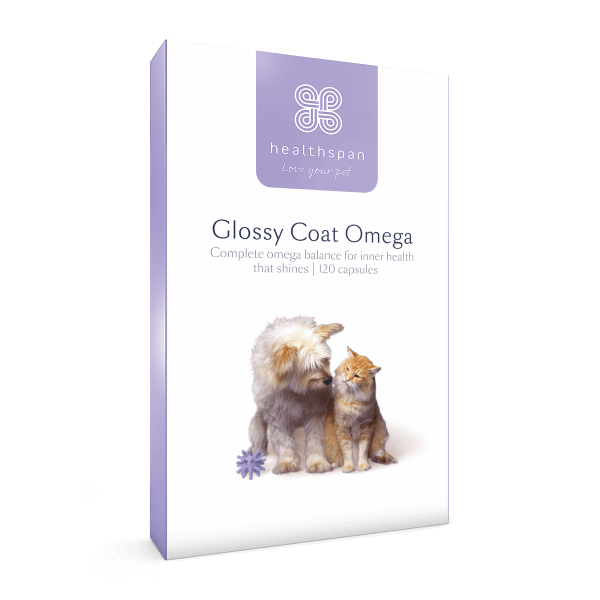Dogs may have incredible noses, but they still need healthy eyes and vision. Here's vet Joanna Woodnutt's advice on the most common eye health problems, to help you spot symptoms sooner.
🕒 4 min read
Unfortunately, some eye conditions are quite common in dogs. For example, I regularly see pets with glaucoma, cataracts, and dry eyes in my consultation room, and always recommend regular check-ups to identify any problems as early as possible.
Here are the signs and symptoms of five of the most common eye health problems in dogs.
1. Cataracts in dogs
Dog cataracts are like cataracts in people; the lens goes cloudy due to changes in its material.
They're very common in dogs with diabetes, but any dog can get them. Some dogs are candidates for cataracts surgery, but many will be treated medically, with drops designed to reduce the chance of other problems developing.
Nuclear sclerosis (which looks like cataracts) is also very common in dogs, but doesn't cause the same vision problems and is just the result of normal ageing.
2. Glaucoma in dogs
Glaucoma in dogs (when the pressure inside the eye increases) is painful and can unfortunately lead to vision loss.
It can be caused by other eye problems, like cataracts, or occur on its own.
You might notice dilated pupils, or the whites of your pet's eyes becoming reddened, or that they start rubbing at their eyes or squinting.
3. Dry eyes in dogs
Dry eye, aka keratoconjunctivitis sicca or KCS, happens when the tear glands don't product enough tears to keep the eyes lubricated. This is normally an immune-mediated disease, although it can also be caused by some drugs and other health problems. It is normally occurs in older dogs.
You'll see painful, red and irritated eyes, usually in a pet with a history of eye problems.
4. Corneal ulceration in dogs
The cornea is the outer surface of the eye, and ulceration is when it becomes damaged due to injury, infection, KCS, or eyelid problems. It is very painful and causes squinting, excessive tear production, rubbing, and redness.
Most corneal injuries heal quickly, but preventing infection is essential, as bacterial infection of the injury can cause 'melting' ulcers which can cause loss of the eye.
Some dogs (especially Boxers and Corgis) are prone to developing 'indolent' ulcers, which fail to heal normally, so owners of these breeds need to be particularly vigilant.
5. Dog conjunctivitis
Conjunctivitis isn't really a problem, it's a symptom of a problem.
Dog conjunctivitis can be caused by bacteria, viruses, or even allergens. You'll spot swollen, red eyelids, and excessive discharge (known as eye bogies!)
It's important to see a vet to rule out the conjunctivitis being caused by any of the other problems above.
Preventing eye health problems
It may not be possible to prevent all eye health problems, but it is possible to help some of them.
Genetic testing
Lots of dog eye problems are inherited, but there are genetic tests available for many of them.
Try to buy dogs from breeders who have done all the recommended health tests for the breed. The tests (and the results you should be looking for) can be seen on the Kennel Club website.
Monitoring and regular care
As part of a regular check-over of your dog, take a look at their eyes and contact your vet if you notice anything amiss. This includes redness, soreness, or increased 'eye bogies'.
While you're at it, you can clean away any discharge that has collected in the inner corner of the eye with cooled boiled water, or dog-safe eye wipes.
Nutrition
During puppyhood, feeding a complete and balanced diet can help the eyes to develop properly. For adult dogs, antioxidants may help to promote eye health, and omega 3s might help to promote beneficial tear production.

Glossy Coat Omega
Advanced omega fish oil formulation for pet health
- Combats dry, flaky skin
- Glossy mane and reduced moulting
- Supports joint, brain and heart health
When to visit the vet
Looking after your dog's eyes is an important part of being a good pet parent. Although there isn't always a way to prevent problems, regular monitoring and fast intervention when there is one is key, as problems can deteriorate quickly and, in a worst-case scenario, lead to blindness.
Book an appointment (preferably for the same day) with your veterinarian as soon as you notice any symptoms.
Commonly asked questions
What colours can dogs see?
I often get asked, "Can dogs see colour?" The answer is yes: but they don't see the same colours we do. This is because dogs only have two cone cells in their eyes, whereas humans have three. Despite the common myth, dogs are not colour-blind.
Can dogs see at night?
Dogs have more rod cells than we do, which means they can see more detail in low light.
How good is a dog's eyesight?
Dogs are nearsighted, meaning they struggle to make out detail at a distance. What they struggle to see at 20 feet, a human with normal vision could (just) see at 75 feet.







